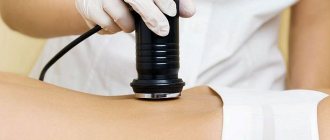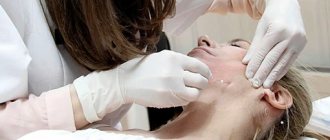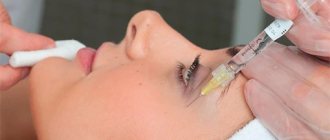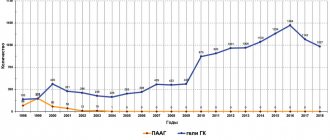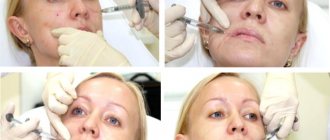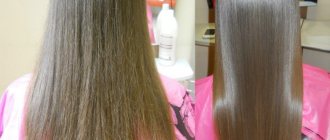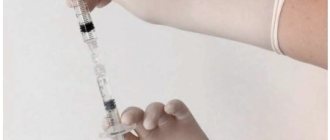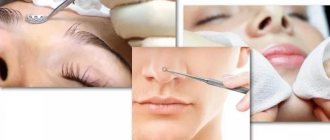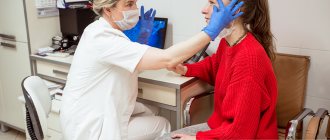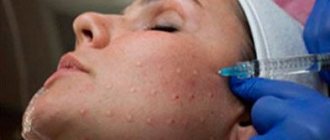From this article you will learn:
- Differences between bioreparation, fillers and mesotherapy from biorevitalization
- Advantages and disadvantages of bioreparation
- Indications and contraindications for the procedure
- Possible side effects from bioreparation
- Preparations for bioreparation
- Stages of bioreparation in a beauty salon
- Recommendations for post-procedure care
- 9 tips on how to maintain the effect after the procedure
- Cost of bioreparation in Russia
- Prices for bioreparation abroad
Bioreparation is an ultra-modern method of rejuvenation and improvement of appearance. This procedure has been a noticeable leader in the world of cosmetology for the last few years. It costs a lot, but this does not reduce the demand for it, because the effect justifies all the costs.
Bioreparation eliminates the most complex aesthetic flaws. We are talking about ptosis, acne, scars and burns. This alone is enough to understand: the procedure has a wide scope for solving cosmetic problems. However, contraindications, as in the case of other procedures, have not been canceled here either. They exist, there are plenty of them, so first of all you need to familiarize yourself with them.
Differences between bioreparation, fillers and mesotherapy from biorevitalization
Bioreparation is a cosmetic procedure aimed at improving the condition of the patient’s skin and appearance. This is an injection technique for introducing hyaluronic acid into the dermis, enriched with vitamins, microelements, peptides and amino acids, to increase its concentration in tissues and restore the epithelial layer.
A special feature of the bioreparation procedure is the solution to many aesthetic problems, such as decreased firmness and elasticity of the skin, due to the influence of a complex of beneficial substances. Injection of active components into the dermis ensures their deep penetration into the tissue and a long-lasting positive effect on the body.
Due to the inclusion of amino acids in the product, skin cells are protected from the negative effects of the environment, as well as stimulation of collagen production. Peptides help in the processes of splitting lipid cells, correcting facial contours, removing fluid and toxins.
A specially selected complex of vitamins is responsible for normalizing intracellular metabolism and collagen formation. As a result of this effect, pigment spots and acne marks are eliminated.
Skin bioreparation is an innovative way to solve age-related problems, which provides long-term hydration and nutrition of the dermis, and also fights the aging process.
Many patients do not see the difference between two popular rejuvenation procedures - bioreparation and biorevitalization, thinking that they are the same thing. In fact, these are completely different methods. To understand the similarities and differences between these procedures, let’s present a table with comparative characteristics:
The presented comparison allows us to conclude that the bioreparation procedure has a more pronounced anti-aging effect and can be used as a therapeutic measure for significant skin aging problems.
Another injection procedure using hyaluronic acid is mesotherapy. Its difference is that the drug injected into the skin is characterized by a lower concentration of the active substance. In addition, this manipulation is effective only if you complete a course of at least six procedures.
During mesotherapy, an individual cocktail is made from hyaluronic acid and a vitamin complex. Bioreparation involves the introduction of a ready-made composition. Mesotherapy can be used at a fairly young age by women who are prone to early manifestations of signs of aging. Bioreparation is recommended for women aged 35 years and older.
Recommended articles on the topic:
- Ultrasonic facial peeling is a pleasant and beneficial procedure for your skin
- Redermalization of the skin: all the pros and cons
- Almond peeling for the face: features of the procedure
Contour plastic surgery is also performed using hyaluronic acid preparations. This is an injection technique that involves correcting the oval of the face and deep creases by adding volume to those areas where it is lacking. The procedure gives a pronounced cosmetic result, but is characterized by a short-term effect, and therefore requires regular repetition - once every 6-12 months (during this time, hyaluronic acid is removed from the body). Bioreparation triggers natural processes to combat age-related changes, so the anti-age effect is longer lasting.
Fillers and Botox – a double blow to wrinkles
These two rejuvenation methods work great together because they work on different types of wrinkles:
- Botox removes dynamic wrinkles caused by facial expressions. Such folds appear when you frown, smile, or squint, and disappear when the facial muscles relax.
- The filler smoothes out static wrinkles that appear due to age-related changes and do not depend on facial expression. They are visible regardless of the condition of the facial muscles. Dermal fillers also restore lost tissue volume, creating a more defined facial contour.
When Botox and dermal fillers are combined, botulinum oxin preparations are typically used around the eyes and forehead, and dermal fillers are used on the middle and lower areas of the face. Using Botox and fillers together can prolong the results of treatments. Hyaluronic acid, contained in many fillers, is destroyed by moving facial expressions, so the decrease in the activity of facial muscles that occurs after Botox injections allows facial skin to remain smooth and youthful longer.
Combination of Botox and dermal fillers before and after
Advantages and disadvantages of bioreparation
Advantages of the bioreparation procedure:
- complete absence of pain;
- proven effectiveness;
- long-lasting anti-aging effect;
- a wide range of indications for the procedure;
- lack of regeneration period;
- Photos after the first session prove the immediate aesthetic result.
Disadvantages of the bioreparation procedure:
- high price;
- the multicomponent composition of the product can cause rejection reactions in the body;
- high probability of allergic reactions.
Indications and contraindications for the procedure
The bioreparation procedure is performed for the following problems on the face:
- severe dry skin;
- the need to restore the dermis after laser procedures;
- drooping facial tissues;
- hyperpigmentation and redness of the skin;
- facial wrinkles, decreased turgor, loss of skin elasticity;
- acne;
- acne and traces of it;
- shallow scars and scars.
The bioreparation procedure is carried out for the following problems on the body:
- signs of age-related changes on the skin of the hands;
- cellulite;
- stretch marks and stretch marks.
Contraindications for bioreparation, as for other injection procedures, are:
- tumor lesions of the dermis;
- diseases of the immune system;
- allergic reaction to ascorbic acid;
- low blood clotting;
- presence of damage to the skin in the area of the procedure;
- pregnancy and breastfeeding;
- diabetes;
- chronic diseases in the active stage;
- low immunity;
- individual intolerance to the components of the product.
The bioreparation procedure is relatively safe, but requires consultation with a specialist before it is performed.
Filler and chemical peels – it all depends on the depth of treatment
In this case, as with the use of a laser, everything depends on the depth of the procedure:
- Superficial peeling can be done immediately after the injection of filler, since the drugs used for its implementation do not penetrate the skin to a great depth.
- For medium treatments, a peel is performed first, and then, after about one to two weeks, when the redness caused by chemical exfoliation of the skin has completely subsided, a filler is injected.
The end result of this combination is smooth, youthful skin and a beautiful complexion. This has been confirmed by a number of scientific studies conducted in India at Apollo Hospital, Chennai and Adichunchanagiri Institute of Medical Sciences, Karnataka.
Combination of filler and chemical peel before and after
Possible side effects from bioreparation
Bioreparation has a number of side effects, which are divided into two groups. The first group is the body’s normal reaction to injections, which is observed in most patients. This may include small hematomas and bruises at injection sites, swelling of the skin. Almost all women experience these changes immediately after a bioreparation session, but they do not pose a threat to health and pass quickly.
The second group is quite dangerous complications that are not the norm. These include:
- Allergy to components in the product . This reaction occurs rarely, but the risk cannot be completely excluded. If during the session the patient complains of itching and burning, and the skin at the puncture sites turns significantly red, it is necessary to interrupt the manipulations and take antihistamines.
- Infectious skin lesions in the injection area. This is possible if the specialist does not follow all the rules of disinfection and hygiene, and also if the patient himself does not properly care for the skin after the procedure, for example, he goes to the sauna or pool immediately after visiting a cosmetologist. In this case, antibiotic treatment is prescribed.
- Tissue fibrosis and scar formation at skin puncture sites . This reaction occurs in people who are prone to the formation of keloids. This is an initial contraindication to bioreparation.
- Compression or blockage of blood vessels at the injection sites . This reaction may occur for several days after the session. It is expressed by pain and a significant change in skin color. The consequences of this complication may be tissue death in the area of the procedure, so in case of such symptoms, a hyaluronidase drug is injected into the skin as soon as possible to remove bioremedies.
Preparations for bioreparation
The preparation for bioreparation consists of modified hyaluronic acid and a complex of useful substances, such as vitamins, microelements, peptides, amino acids. The product is injected under the skin and remains there for up to four weeks, which provides long-lasting rejuvenating effects. During this time, natural anti-aging processes are launched in the body. Biological agents are selected by the doctor during the consultation depending on the patient’s specific aesthetic problems.
1. “Mesoxanthin-F199” (USA). The drug "Mezoxanthin-F199" (Meso−Xanthin) is aimed at starting the processes of protecting the cell's DNA molecule in order to prolong the youth of the skin. The use of this product is allowed from 28 years of age. For patients over 40 years of age, it is recommended to use Mesoxanthine-F199 in combination with Mezovarton.
Main components of the product:
- high molecular weight hyaluronic acid;
- vitamins;
- amino acids;
- growth factors;
- carotenoid “Fucoxanthin” (a highly effective active ingredient, an extract from seaweed; its purpose is to correct the vital processes of skin cells; as a result, the epithelial tissues are filled with moisture, the face looks moisturized, younger and more toned, the skin color is evened out, and the aging process slows down).
"Mezoxanthin-F199" (Meso−Xanthin) is used in a course consisting of four procedures carried out every 7–10 days.
Meso-Wharton-P199 (“Mesovarton”) is a bioremediant with a similar spectrum of action. It is distinguished by the presence of peptides that stimulate the production of its own stem cells. As a result, the patient receives a pronounced rejuvenating effect. The procedure using peptides is called peptide bioreparation. It is indicated for people over 40 years of age.
2. Plenhyage (Italy). The difference in the composition of the bioreparant "Plenage" is that it contains polynucleotides responsible for the rejuvenation of the upper layers of the dermis. The product is used for a leveling effect, as well as removing toxins and launching the protective functions of the skin. A pronounced effect is observed immediately after the session. Many cosmetologists highlight this drug for bioreparation as one of the best.
People who cannot tolerate seafood may have an allergic reaction.
3. "Gialripayer" (Russia). This is a line of products for carrying out the bioreparation procedure.
Hyalrepair 02 is a biorepair that is used to eliminate scars, stretch marks, and reduce skin sagging. The procedure is carried out in a course of 3–4 sessions with an interval of 14–21 days. The product includes:
- modified hyaluronic acid enriched with vitamin C;
- lysine;
- proline;
- glycine.
Hyalrepair 04. The drug is aimed at moisturizing the skin, giving it tone and increasing elasticity. The result of use is an even complexion, smoothing out fine wrinkles, minimizing the negative consequences of skin diseases such as acne, acne, rosacea. The product can be used from 25 years of age. The procedure is carried out in a course of 3–5 sessions with an interval of 2–3 weeks.
Active ingredients:
- hyaluronic acid;
- ascorbic acid;
- cysteine.
Hyalrepair 08. The biorepair is distinguished by the fact that, in addition to hyaluronic acid and vitamin C, it is enriched with L-carnitine. Its unique effect is not only a rejuvenating effect, but also a reduction in fat deposits in the patient’s neck, décolleté, and arms. The procedure is carried out in a course of 3–5 sessions at weekly intervals.
4. KHARIZMA (France). A line of drugs for the bioreparation procedure.
BioRevitalift. A highly effective product that gives a visible rejuvenating effect from the first use. After the course, a sustainable result is achieved. The number of sessions is assigned individually. The composition of the drug includes:
- hyaluronic acid;
- peptides;
- vitamins;
- amino acids;
- sodium chloride solution.
The bioreparation course can be completed in two ways:
- standard – 3-4 procedures with an interval of 3-4 weeks, then 2-3 procedures throughout the year to consolidate the result;
- intensive - six procedures with an interval of 14 days, then another five or six procedures throughout the year.
We recommend
Laser aesthetic cosmetology: perfect technology for perfect appearance Read more
KHARIZMA Ultra. The product includes:
- hyaluronic acid (8 mg/ml);
- amino acids;
- coenzymes and minerals;
- vitamins;
- sodium chloride solution.
This drug can also be injected in a course in the two ways described above. The cosmetologist selects an action plan individually, based on the patient’s existing problems.
KHARIZMA Light. The composition of this product is identical to Ultra. The concentration of hyaluronic acid here is 6 mg/ml. It is possible to carry out a standard or intensive course of procedures.
KHARIZMA Forte. A preparation similar in composition with a higher concentration of hyaluronic acid – 7 mg/ml.
5. VIVIFY (Korea). Vivify Rejuvenating Soft Filler is a product for the bioreparation procedure, enriched with peptides. Used for patients aged 45–65 years. It includes:
- 24 amino acids;
- Three biomimetic peptides;
- 14 vitamins;
- hyaluronic acid;
- 8 coenzymes and minerals.
The drug is designed to launch the natural processes of skin regeneration and renewal, as well as collagen production. It has an immediate, pronounced moisturizing effect, protects epithelial tissue from the effects of free radicals and sunlight.
6. Dermarenlumi (Korea). Dermarenlumi 10.0 (“Dermarenlumia”) is a bioreparant containing polydeoxyribonucleotides (PDRN). Used to restore facial contours. Due to the effect on the DNA of skin cells, wrinkles are smoothed out, the tone and elasticity of the dermis is restored.
7. Mixyal Density (Switzerland). The drug is used to solve age-related skin problems typical of smokers, as well as patients with tired or fine-wrinkled types of aging. Effective in the fight against acne marks and changes in facial contours. It includes:
- hyaluronic and aspartic acid;
- minerals;
- DNA nucleotide;
- vitamins;
- amino acids.
8. REVITA (France). " RevitaDerm" is a biorepair that is used for problems with age-related changes, as well as for restoring the skin after traumatic cosmetic procedures and operations. The composition of the product includes hyaluronic acid, amino acids, sodium sulfate.
How is mesotherapy useful?
Mesotherapy is an injection procedure in which a whole cocktail of minerals, vitamins, amino acids and other beneficial components is injected under the skin.
Very often, the basis of this cocktail is hylauronic acid, as it is able to retain water in the skin, providing deep hydration.
It also stimulates the production of your own collagen and elastin, which explains the powerful anti-aging effect. Mesotherapy is done starting from the age of 18.
It helps to improve overall skin tone, improve complexion, remove the first wrinkles, and also cope with scars, acne and rosacea.
Stages of bioreparation in a beauty salon
Before carrying out the bioreparation procedure, you must attend an in-person consultation with a cosmetologist. The specialist will determine the type of skin problems you have and will also suggest the most suitable bioremediation composition. Since this cosmetic procedure involves the introduction of a multicomponent drug under the skin, it is necessary to test for allergic reactions to eliminate the risk of complications.
The next step is to prepare the area where the drug is administered for the procedure: skin defects such as pimples, blackheads, and other lesions are eliminated, if any, and an antiviral agent is taken to prevent exacerbation of herpes. A week before bioreparation, you must refrain from drinking alcohol and blood thinning medications to prevent the formation of large hematomas.
Bioreparation can only be carried out in a cosmetologist's office. Before the procedure, you must thoroughly clean the skin and apply local anesthesia. The doctor must open the drug in the presence of the patient and begin manipulation.
The procedure is carried out using a papular technique, as in biorevitalization. This means that shallow punctures are made across the entire surface to be treated, into which a small amount of the drug is injected.
Already on the first day after bioreparation, you can notice a positive effect - due to the effect of hyaluronic acid, the skin is saturated with moisture, wrinkles are smoothed out, and additional volume is added. The final result is observed after a few weeks - this is how long it takes for all the active components to have their effect on the skin. During the course, the effect will be cumulative.
When can you do massage, peeling, hardware techniques after mesothreads?
Experts recommend doing a massage after installing mesothreads a month or more later. Massage procedures should be discussed with a specialist and performed carefully, as well as lifting the face and other parts of the skin. If an anti-cellulite massage is required, it is best to carry it out no earlier than after 4 months.
Peeling helps smooth the skin, remove dead skin cells, and stimulate collagen production. The procedure goes well with mesothreads, but it is better to perform peeling two weeks before installing the threads, or three weeks after installation.
But after the threads are installed, hardware procedures can be performed in half a month or a month. After this time, current therapy, plasma lifting and other types of hardware techniques are carried out. It is better to carry out laser lifting no earlier than a month after the installation of mesothreads.
You can consult with doctors on all types of procedures at a convenient time. They will select rejuvenation options taking into account the problems, perform rejuvenation sessions at the most reasonable prices with high quality performance.
Recommendations for post-procedure care
Immediately after the procedure, the patient can return to his normal life. However, it is worth considering that after bioreparation, papules (small balls) form on the treated area of skin, and swelling, induration and bruising are also possible. Therefore, it is better to schedule a session so that you have the opportunity to not leave the house for 2-3 days until your face returns to normal. In addition, it is necessary to follow a number of rules after carrying out this cosmetic manipulation:
- The puncture sites should be periodically treated with an antiseptic to prevent the development of infection.
- To avoid the formation of large hematomas, immediately after the bioreparation procedure, ice must be applied to the puncture sites. Cold compresses can be continued for another 2-3 days.
- For the first few days, it is important to prevent overheating of the epithelial tissue (do not visit the sauna, bathhouse, etc.).
- You should not drink alcohol for at least a week after bioreparation. Firstly, it thins the blood, which increases swelling and bruising, and secondly, it promotes faster breakdown of the active components of the drug, which reduces the effectiveness of the cosmetic procedure.
- You should not massage your face, as it also increases blood circulation and reduces the effectiveness of hyaluronic acid. It is best to exclude any mechanical impact on the skin during the entire course of bioreparation procedures.
- Patients prone to the formation of age spots should use sunscreen regardless of weather conditions.
A short guide to threads. Everything you need to know about thread lifting.
We have already published a short guide to fillers (you can read it here
), now it’s time to deal with such a cosmetology tool as thread lifting.
Thread lifting is a transitional rejuvenation technique that occupies an intermediate place between cosmetic and surgical procedures. It is used in cases where sagging of the tissues of the face and body has already begun, but you can still do without a scalpel.
Based on materials, threads are classified into biodegradable (which dissolve over time) and non-absorbable.
Absorbable threads
The basic principle of absorbable threads is natural rejuvenation using the body’s own resources
. Let's figure out how this happens?
Biodegradable threads are implanted into the surface layers of tissue. The body, reacting to foreign objects at their locations, activates the synthesis of its own elastin and collagen. Due to this, a strong natural framework of connective tissue is formed around the threads. The material from which the threads are woven is gradually removed from the body over the course of several months after the procedure (it is reabsorbed). However, the antiage effect lasts for another 2-3 years, because the elastin-collagen framework remains in place of the threads.
The procedure for inserting threads is almost painless, is performed with the thinnest needles, and can be performed under local anesthesia or, in case of a low pain threshold, even without it.
Absorbable threads are effective for the prevention of age-related imperfections or for the correction of changes that have just begun and are recommended for women and men under the age of 40.
There are a lot of absorbable threads: Miracu mesothreads, Ellanse liquid threads, Cog threads, incredibly popular Aptos threads and many others.
Thus, Aptos threads (Russian production) are one of the most studied and constantly improved threads, which are also much cheaper than their foreign counterparts. The Aptos implantation technique has been thoroughly studied, which makes the installation process flawless. These threads not only improve the skin framework, but also stimulate the synthesis of its own elastin and collagen.
Non-absorbable threads
Over time, any organism, like any building, deteriorates. And if in some cases it is quite possible to get by with only cosmetic repairs, then in others it may be necessary to update the foundation. Installation of threads is just the second case, the creation of a new subcutaneous frame
, which improves facial contour and skin condition in general.
The history of this area of thread lifting is inextricably linked with the so-called golden threads, with the help of which many successfully lift not only the face, but also the décolleté, hips, and arms. Gold thread lifting has been used to maintain beauty and youth for more than half a century. This procedure is safe, since gold in the vast majority of cases is not rejected by the human body. Interesting fact: the adult human body contains about 10 mg of gold.
The threads are made of the highest standard gold and glycolic acid. Their thickness does not exceed one millimeter and each has special notches with which the threads are fixed in the tissues. To reduce the risk of complications to zero, the threads are inserted to a shallow depth.
Golden fibers from the inside smooth out wrinkles and prevent new ones from forming. After their implementation, the first positive changes are noticeable after about two weeks, and significant improvement occurs gradually over six months.
Such reinforcement produces a good effect not only on the face, but also on the chest and neck. It smoothes out pronounced wrinkles and improves shape. In particularly difficult cases (which, however, our doctors successfully cope with), this procedure is combined with injection cosmetology.
Reinforcement with gold threads is an effective technology, but this is not an option for every patient, since this technique has many contraindications.
“Gold” rejuvenation is not recommended for allergies to gold, diseases of the hematopoietic and endocrine systems (including diabetes), and infectious diseases. Of course, the use of gold threads is prohibited in case of oncological pathologies, during pregnancy and breastfeeding, in case of existing wounds and cuts. How the procedure works
Since thread lifting is a minimally invasive surgery (but still surgery!), it is preceded by a mandatory in-person consultation.
On the day of the procedure itself, the doctor thoroughly disinfects the skin in the correction area - treats it with antiseptics in the direction from the center to the periphery. He then marks the thread lines on the skin and applies anesthesia. Our clinic uses only modern anesthetics that do not cause allergic reactions and provide a lasting analgesic effect.
Then the threads themselves are inserted under the skin using special needles, which do not cut, but push the tissue apart. The threads are inserted along pre-designated lines at a depth of up to five millimeters, after which they are fixed in the tissue. The number of threads is selected individually, since it depends on the correction area, the nature and complexity of the aesthetic problem.
After the installation of the threads is completed, the skin is again treated with antiseptic and nourishing cosmetics with anti-inflammatory and soothing effects are applied.
It will be possible to repeat the procedure (sometimes additional correction is necessary) no earlier than two months after the initial reinforcement.
- Both in the case of biodegradable and non-absorbable threads, specific threads are selected by the cosmetologist individually for each patient.
- “Fishing” the face with lifting threads requires special skill and a thorough knowledge of the physiology and anatomy of the human body. Therefore, only certified doctors have the right to install threads.
- Everyone is required to have a personal certificate from the official distributor, regardless of length of service, rank or other regalia. It is important that each type of thread must have its own certificate. The specialists at the Medial clinic have all such documentation.
To make an appointment for consultations and thread lifting procedures, call +7 (499) 137-00-00
or leave applications by email
[email protected]
.
Cost of bioreparation in Russia
The bioreparation procedure is quite expensive. This is due to the use of unique multicomponent drugs - many of them contain patented substances that are difficult to extract or synthesize. In addition, their production is carried out in special laboratories where scientists and specialists from various fields of science work.
The bioreparation procedure is carried out in a course, so, most likely, it will not be possible to spend less than 50 thousand rubles on the transformation. The most affordable price is the Russian-made bioreparation drug “Gialripayer”.
Prices for bioreparation abroad
The bioreparation procedure is offered in beauty salons in Russia, the CIS countries and Europe; other aesthetic clinics around the world use analogues of bioreparations - revitalizants. Before carrying out a course of injections, it is important to carefully study the composition of the product. The cosmetologist is obliged to consult you in advance, as well as answer any concerning questions regarding these manipulations with your face.
Bioreparation and biorevitalization procedures are especially popular among residents of Great Britain, Finland, Austria, France and China. Since ladies regularly undergo injection courses, in order to save money, they purchase subscriptions to beauty salons or purchase drugs for several sessions. The services of a cosmetologist, of course, are paid one-time at current rates.
The use of hyaluronic acid in injection rejuvenation techniques has made the whole world believe that even without plastic surgery it is possible to slow down the aging process. Recently, in Russia, more and more representatives of the fair sex are interested in this rejuvenation technique.
Russian beauties prefer to have the procedure performed by experienced specialists in European countries, despite the fact that the price of bioreparation there is significantly higher. Russian women visit the UK, Finland, Italy, the Czech Republic, and France in order to rejuvenate and become even more beautiful.
Great Britain
Approximate cost:
- the cost of one bioreparation procedure (drug and cosmetologist’s services - from 350 euros);
- visa application – from 67 euros;
- flight – from 280 euros;
- accommodation from 37 euros.
Total: 734 euros.
UK clinics are characterized by excellent service and quality of medical services.
Finland
Approximate cost:
- cost of bioreparation – from 341 euros;
- visa application – from 37 euros;
- flight – from 275 euros;
- accommodation – from 35 euros.
Total: 688 euros.
Finland is famous for its incredibly beautiful nature, which is protected in every possible way. There is no doubt that in other areas, Finns treat their activities responsibly and carefully.
Italy
Approximate cost:
- price per session – from 327 euros;
- visa application – from 125 euros;
- flight – from 312 euros;
- accommodation – from 30 euros.
Total: 794 euros.
Bioreparation preparations made in Italy are very popular and distributed throughout the world. There are often promotions and discounts for the procedure. Therefore, you can save a lot and spend the remaining money on pleasant purchases.
